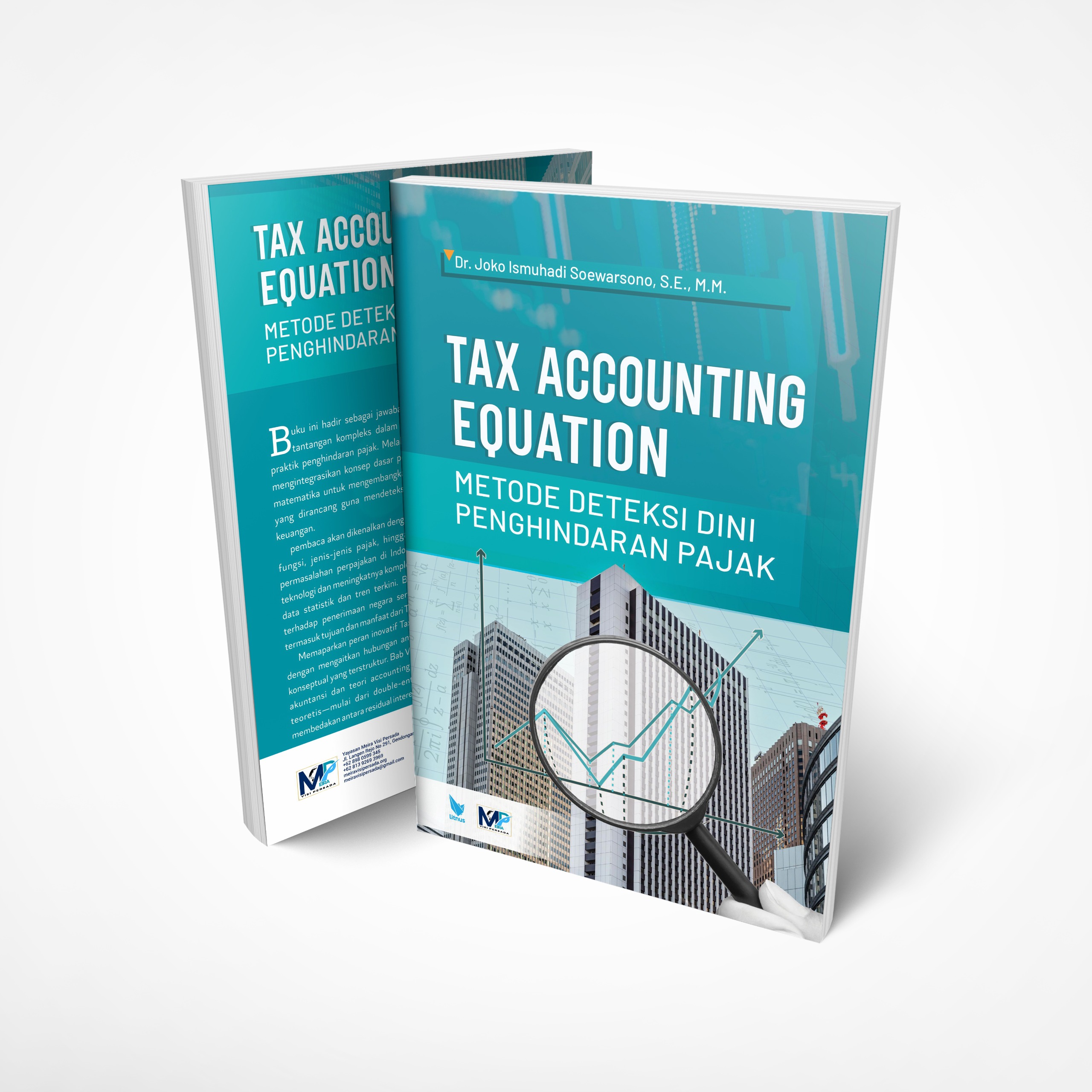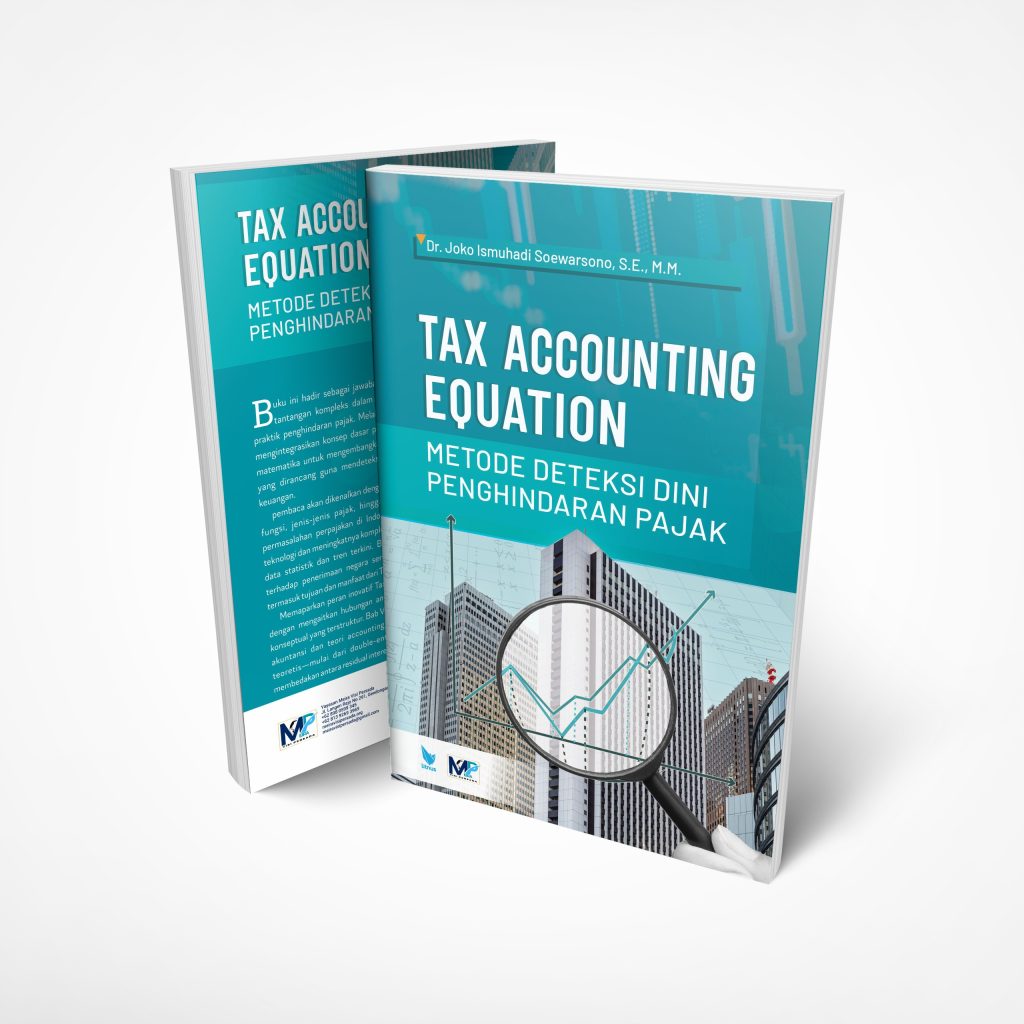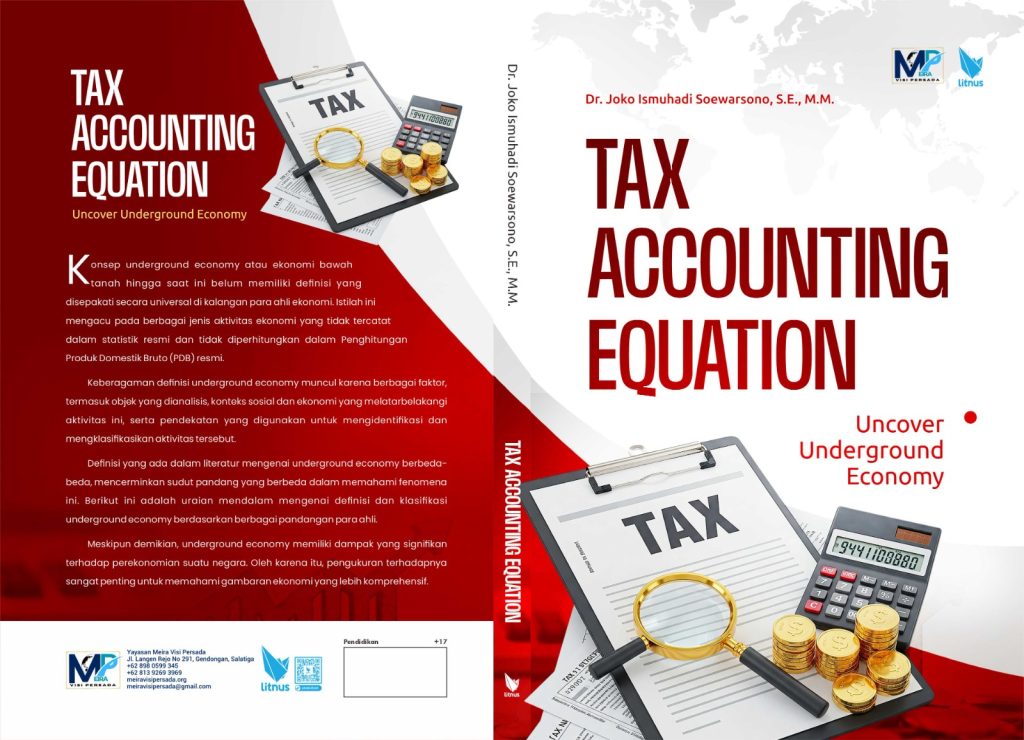
Boosting Indonesia’s Tax Ratio: A Strategic Framework for Integrating Tax Accounting with Self-Assessment Monitoring
- Ekonomi
Sunday, 08 June 2025 14:26 WIB

Jakarta, fiskusnews.com:
I. Executive Summary
Indonesia faces a significant fiscal challenge with a persistently low tax ratio, recorded at 9.1% of Gross Domestic Product (GDP) in 2021. This figure is notably among the lowest globally and falls substantially below the average for middle-income countries in the Southeast Asian region. The underperformance in tax revenue is primarily attributed to a confluence of factors, including low tax compliance, a relatively narrow tax base, and inefficiencies embedded within the existing tax collection processes. Addressing this fiscal gap is not merely a matter of revenue generation but is critical for unlocking Indonesia’s full economic potential, as studies suggest an ideal tax ratio of 15.29% for optimal economic growth.
This report proposes a transformative strategic integration: leveraging the fundamental principles of the Tax Accounting Equation with a sophisticated, real-time Self-Assessment Monitoring System, all seamlessly embedded within Indonesia’s modernizing Core Tax Administration System (CTAS). The central aim of this innovative approach is the proactive identification of “Tax Gaps”—defined as discrepancies between a taxpayer’s declared income and their actual economic activity—early in the tax cycle. By harnessing automated data analysis and fostering a unified view of taxpayers within the enhanced CTAS , the system would encourage voluntary “Tax Deposits” for estimated amounts due before any formal tax research or audits are initiated [User Query]. This paradigm shift from reactive enforcement to proactive compliance is anticipated to streamline the collection process, significantly improve overall tax compliance rates, and establish a more robust and equitable fiscal foundation essential for Indonesia’s sustained economic development. Key recommendations stemming from this analysis include developing a comprehensive strategic roadmap for CTAS enhancement, ensuring robust data governance frameworks, enacting necessary legal reforms to facilitate the tax deposit mechanism, and implementing extensive taxpayer education and outreach programs to foster a culture of voluntary compliance.
II. Introduction: The Imperative for Boosting Indonesia’s Tax Ratio
The trajectory of a nation’s economic development is inextricably linked to the strength and efficiency of its fiscal system. For Indonesia, a nation with immense economic potential, the current state of its tax revenue collection presents a critical impediment to achieving its full economic aspirations. A thorough examination of Indonesia’s tax landscape reveals a compelling need for innovative and systemic reforms.
Indonesia’s Current Tax Revenue Performance and Economic Context
Indonesia’s tax revenue performance has been a subject of significant concern, consistently lagging behind its regional and global peers. In 2021, the nation’s tax revenue ratio to Gross Domestic Product (GDP) stood at a mere 9.1%. This figure is particularly stark when compared to the average for middle-income countries in Southeast Asia, where Cambodia’s ratio reached 18%, Malaysia’s 11.9%, the Philippines’ 15.2%, Thailand’s 15.7%, and Vietnam’s 14.7% in the same period. The World Bank has highlighted this as one of the lowest tax revenue performances globally, underscoring the severity of the challenge.
Furthermore, the trend over the past decade has been unfavorable, with Indonesia’s tax ratio experiencing a decline of approximately 2.1%. A notable sharp drop occurred in 2020, largely attributable to the profound economic impact of the COVID-19 pandemic. Value Added Tax (PPN) and Corporate Income Tax (PPh), traditionally the main sources of tax revenue, contributed approximately 66% of total tax collection in 2021, equating to about 6% of GDP, yet these key revenue streams are still performing below their potential. This persistent underperformance is not merely a statistical anomaly but represents a significant constraint on public spending and national development initiatives.
From an economic development perspective, empirical evidence suggests a crucial threshold for Indonesia’s tax ratio. Research indicates that an ideal tax ratio of 15.29% is necessary to foster optimal economic growth. This finding highlights a substantial gap between Indonesia’s current fiscal reality and its potential for robust, sustained economic expansion. The current low ratio not only limits government capacity but may also actively hinder economic dynamism.
The Concept of the Tax Gap and its Impact on Fiscal Health
Central to understanding Indonesia’s tax revenue challenges is the concept of the “tax gap.” Fundamentally, the tax gap is defined as the difference between the actual tax revenue collected and the theoretical tax collections that would occur if there were full compliance with the existing tax code. It represents the revenue loss primarily arising from taxes due within a certain period that remain unpaid. This gap is typically composed of three main elements: underreporting of income, non-filing of tax returns, and underpayment of reported taxes. For example, in the United States, underreporting alone accounted for 80% of the gross tax gap.
Effectively understanding and addressing the tax gap is a pivotal instrument for enhancing domestic revenue mobilization (DRM), which is crucial for sustainable development. It offers valuable insights into the effectiveness of existing tax policies and the efficiency of tax administration. The World Bank has specifically warned that Indonesia’s tax collection efficiency continues to lag behind neighboring countries, and critically, its tax gap continues to widen. This widening gap signifies an increasing leakage of potential revenue, further exacerbating the challenge of a low tax ratio.
Overview of the Proposed Integration: Tax Accounting, Self-Assessment, and CTAS
In response to these pressing fiscal challenges, a strategic proposal centers on a novel and transformative integration: linking the principles of the Tax Accounting Equation with a sophisticated Self-Assessment Monitoring System, all operating within Indonesia’s modernizing Core Tax Administration System (CTAS) [User Query]. This proposed system is designed to fundamentally alter the approach to tax compliance and collection.
The primary objective of this integration is the early detection of “Tax Gaps”—discrepancies between a taxpayer’s declared income and their actual economic activity [User Query]. By leveraging advanced data analytics and fostering a unified, comprehensive view of taxpayers within the enhanced CTAS, the system aims to identify potential non-compliance proactively. Upon identification of such discrepancies, taxpayers would be encouraged to make a “Tax Deposit” for the estimated amount due before any formal tax research or audits are initiated [User Query]. This proactive measure is intended to streamline the collection process, significantly improve overall tax compliance, and shift the tax administration’s focus from reactive enforcement to preventive and facilitative compliance. This approach aligns seamlessly with the Indonesian government’s ongoing modernization efforts for its CTAS and its broader initiatives to enhance tax compliance through technological advancements.
Deeper Implications of Indonesia’s Tax Ratio and Tax Gap Dynamics
The analysis of Indonesia’s tax performance reveals several profound implications that extend beyond mere revenue figures.
First, the current tax ratio of 9.1% is substantially below the identified optimal growth-maximizing tax ratio of 15.29%. This observation, combined with Indonesia’s classification as a “lower middle-income country” , points to a structural phenomenon. Countries in this economic group are frequently observed to exhibit a stagnant tax ratio trend, often becoming ensnared in what can be described as a “tax ratio constraint”. This constraint suggests that the persistently low tax ratio does not merely reflect under-collection; it actively limits optimal economic growth. While an initial increase in the tax ratio might have a temporary contractionary effect, once it surpasses a certain threshold, such as Indonesia’s 15.29%, any further rise becomes expansionary, positively influencing economic growth. Conversely, if the tax burden is perceived to exceed an optimal point, it can lead to increased tax avoidance. Therefore, boosting the tax ratio, as proposed by integrating tax accounting with self-assessment monitoring, is not solely a fiscal necessity for generating revenue but a direct and potent lever for stimulating broader economic acceleration and extricating the nation from this growth-limiting fiscal condition. The proposed system, by effectively closing the tax gap, directly contributes to pushing Indonesia towards this optimal ratio, thereby fostering a more dynamic economy.
Second, an examination of the World Bank’s report on Indonesia’s tax gap highlights that the analysis specifically covers both Value Added Tax (VAT) and Corporate Income Tax (CIT) compliance and policy gap estimates. Tax gap analysis typically distinguishes between a “compliance gap,” which represents additional revenues that could be raised if tax legislation were perfectly enforced, and a “policy gap,” which signifies revenue obtainable if the tax base were taxed at the current standard rate, assuming perfect enforcement. The factors contributing to Indonesia’s low tax revenue include “low tax compliance, relatively low effective tax rates, and a narrow tax base”. Furthermore, the Harmonization of Tax Regulations Law (UU HPP) introduced policies such as increasing the standard VAT rate and eliminating certain tax exemptions , which are legislative measures designed to address the policy gap. This reveals that Indonesia’s tax challenge is dual in nature, stemming from both how effectively existing laws are enforced (the compliance dimension) and the inherent revenue-generating capacity of the laws themselves (the policy dimension). The proposed system, by focusing on detecting discrepancies between reported income and actual economic activity [User Query], primarily targets the compliance gap. While this is a critical and impactful area, its overall effectiveness will be significantly amplified when complemented by ongoing policy reforms, such as those initiated under the UU HPP, that address the policy gap. The estimated potential of the UU HPP to increase tax revenue by 0.7-1.2% of GDP annually clearly demonstrates the substantial impact of policy changes. A truly successful long-term strategy for boosting Indonesia’s tax ratio necessitates a synchronized and comprehensive approach that tackles both compliance and policy dimensions of the tax gap in a coordinated manner.
III. Indonesia’s Tax Landscape and the Persistent Tax Gap
Indonesia’s tax system operates within a complex socio-economic environment, characterized by unique challenges that contribute to its persistently low tax ratio and widening tax gap. Understanding these underlying factors is crucial for designing effective interventions.
Historical Trends and International Comparisons of Indonesia’s Tax Ratio
As previously highlighted, Indonesia’s tax ratio stood at a mere 9.1% in 2021 , a figure that places it significantly behind its regional counterparts. For instance, Cambodia achieved 18%, the Philippines 15.2%, Thailand 15.7%, and Vietnam 14.7% in the same period. When excluding duties and excise, Indonesia’s pure tax ratio was even lower, at 7.52%. This current performance is in stark contrast to the average tax ratio observed in developed countries, which frequently exceeds 30%, with examples like Sweden reaching over 50%. The average for the Asia Pacific region is around 20%.
The trend has been concerning, with Indonesia’s tax ratio decreasing by approximately 2.1% over the past decade , indicating a persistent, systemic challenge rather than a transient economic fluctuation. This decline, particularly the sharp drop in 2020 due to the COVID-19 pandemic, underscores the vulnerability of the tax system to economic shocks and the urgent need for structural resilience.
To further illustrate this disparity, the following table presents a clear comparison of Indonesia’s tax ratio against selected regional peers in 2021:
Table 1: Indonesia’s Tax Ratio vs. Regional Peers (2021)
| Country | Tax Revenue Ratio to GDP (%) | Source |
|---|---|---|
| Cambodia | 18.0 | World Bank |
| Philippines | 15.2 | World Bank |
| Thailand | 15.7 | World Bank |
| Vietnam | 14.7 | World Bank |
| Malaysia | 11.9 | World Bank |
| Indonesia | 9.1 | World Bank |
This comparative view reinforces the critical need for Indonesia to enhance its tax collection capabilities to align with regional averages and support its national development agenda.
Factors Contributing to Indonesia’s Low Tax Revenue and Widening Tax Gap
The World Bank has identified several key drivers behind Indonesia’s low tax revenue and widening tax gap. These include:
- Low Tax Compliance: A significant portion of the tax gap stems from taxpayers not fully adhering to their obligations. This can manifest as underreporting of income, non-filing of returns, or underpayment of declared taxes.
- Relatively Low Effective Tax Rates: The actual tax burden on economic activity may be lower than statutory rates suggest due to various exemptions, deductions, or other policy choices.
- Narrow Tax Base: The scope of taxable economic activities or individuals may be limited, leaving a substantial portion of the economy untaxed or undertaxed.
Beyond these broad categories, several structural and administrative factors contribute to the challenge:
- Complexity of Tax Regulations: The inherent complexity of tax regulations in Indonesia often acts as a significant deterrent to compliance. Taxpayers frequently struggle with understanding intricate laws and the requirement for extensive documentation. Frequent policy changes further exacerbate this confusion, making it difficult for individuals and businesses to keep pace with evolving requirements.
- Perceived Fairness of the Tax System: The “perceived fairness of the tax system” plays a critical role in influencing taxpayer behavior. Individuals and businesses are less inclined to comply if they believe tax rates are excessive or government spending is inefficient. Conversely, visible benefits derived from tax revenues, such as improved infrastructure, healthcare, and education, tend to foster greater compliance.
- Limitations of the Existing Core Tax System: The aging infrastructure and perceived lack of confidence in the data integrity and timeliness of the existing core tax system have demonstrably hindered the Directorate General of Taxes (DGT)’s ability to make swift strategic and operational decisions. This directly impacts revenue objectives and the effective identification of non-compliant taxpayers, as the current system is described as “no longer responsive enough”. The DGT initiated the Modernization of Core Tax Administration System (CTAS) project to address these issues, recognizing the need for a unified view of taxpayers and reduced administrative costs.
Current Tax Gap Estimation Methodologies in Indonesia
Indonesia, through collaborative studies with international bodies like the World Bank, has undertaken efforts to estimate its Value Added Tax (VAT) and Corporate Income Tax (CIT) gaps. These estimations have primarily utilized “top-down approaches based on national accounts”.
For the VAT gap, a consumption-side approach is employed, where the VAT Total Tax Liability (VTTL) is calculated by summing liabilities from various components such as final consumption by households, government, non-profit institutions, intermediate consumption, and gross fixed capital. For the CIT gap, the International Monetary Fund’s (IMF) Revenue Administration Gap Analysis Program framework is applied. This is also a top-down approach that uses national accounts’ gross operating surplus (GOS) data, with appropriate adjustments for conceptual differences between GOS and the CIT base.
Top-down methods generally estimate the theoretical tax liability from aggregated data sources and then subtract the actual revenue received , providing a macroeconomic perspective on tax implementation and compliance. While offering a broad overview and being relatively resource-efficient, these methods inherently carry a degree of uncertainty due to the subtraction of large numbers, which can amplify small errors.
In contrast, “bottom-up approaches” utilize micro-level data derived from tax returns, audits, and risk registers. These methods are lauded for their superior granularity, accuracy, and actionability , enabling better prioritization of compliance resources. They often incorporate sophisticated statistical techniques such as regression analysis, clustering, and machine learning to identify patterns and predict potential tax revenue. Machine learning, for instance, can capture complex, non-linear relationships in data and outperform traditional statistical methods in predicting tax evasion, leading to more reliable tax gap estimates.
Deeper Implications of Indonesia’s Tax Gap Analysis
The current state of Indonesia’s tax landscape and its approach to tax gap analysis carry significant implications for future fiscal policy and administration.
First, the persistent low tax ratio is explicitly attributed to a combination of “low tax compliance, relatively low effective tax rates, and a narrow tax base”. This observation, when viewed through the lens of tax gap analysis, reveals a critical interplay between policy and compliance. The tax gap is fundamentally divisible into a “compliance gap”—the revenue lost due to non-adherence to existing tax laws—and a “policy gap”—the revenue forgone due to the design of the tax law itself, such as low rates or extensive exemptions. The Harmonization of Tax Regulations Law (UU HPP), with its policies like increasing the standard VAT rate and eliminating certain tax exemptions , represents direct legislative interventions aimed at addressing the policy gap. This demonstrates that Indonesia’s tax challenge is multifaceted, stemming from both the effectiveness of enforcing existing laws (compliance) and the inherent revenue-generating capacity of the laws themselves (policy). While the proposed system of integrating tax accounting with self-assessment monitoring is primarily designed to target the compliance gap by detecting discrepancies and encouraging voluntary payments, its ultimate success and impact on the overall tax ratio will be significantly amplified by simultaneous and ongoing efforts to address the policy gap. The UU HPP’s estimated potential to increase tax revenue by 0.7-1.2% of GDP annually clearly illustrates the substantial impact of policy changes. Therefore, a truly holistic and effective strategy for boosting Indonesia’s tax ratio must acknowledge and actively manage both the compliance and policy dimensions of the tax gap in a coordinated manner.
Second, Indonesia’s current reliance on “top-down approaches based on national accounts” for its VAT and CIT gap estimations provides a macroeconomic overview but may not furnish the precise, actionable information required for targeted interventions at the individual taxpayer level. While top-down approaches offer a broad aggregate picture, they are noted to suffer from inherent “uncertainty” and are less effective in providing “operationally useful information” or detailed insights, especially for smaller components of the tax gap. In contrast, bottom-up approaches, which utilize micro-level data, are lauded for their “granularity, accuracy, and actionability” and their capacity to enable “better prioritisation of compliance resources”. The user’s proposed system explicitly aims for “early detection of Tax Gaps – discrepancies between a taxpayer’s declared income and their actual economic activity” [User Query]. This objective inherently necessitates the analysis of granular, micro-level data. This indicates that Indonesia’s current reliance on top-down tax gap estimation, while valuable for a general understanding of revenue leakage, may not provide the specific, actionable intelligence needed for real-time, targeted compliance interventions. The proposed integration of tax accounting data with a self-assessment monitoring system, by its very nature, represents a crucial step towards adopting a more sophisticated, micro-level, “bottom-up” approach to tax gap identification. This strategic shift is paramount for moving beyond a general understanding of revenue leakage to implementing precise, real-time compliance interventions, thereby making the proposed system a foundational element in refining Indonesia’s overall tax gap analysis capabilities.
IV. Foundational Elements: Tax Accounting and Self-Assessment
The proposed integration hinges upon a robust understanding and application of fundamental accounting principles and the capabilities of modern self-assessment and automated monitoring systems. These elements form the bedrock upon which a more efficient and proactive tax administration can be built.
The Basic Accounting Equation: ASSETS = LIABILITIES + EQUITY and its Relevance to Taxable Economic Activity
The fundamental accounting equation, ASSETS = LIABILITIES + EQUITY, serves as the bedrock for understanding any entity’s financial position. Assets represent what a business owns, such as cash, equipment, or property. Liabilities denote what it owes to external parties, like loans or accounts payable. Equity signifies the residual claim of the owners, representing the net worth of the business. This equation must always remain in balance, reflecting the dual-entry accounting system where every transaction affects at least two accounts, ensuring the equation’s equilibrium.
Crucially, while revenue and expenses are not directly part of the accounting equation itself, they inherently impact “Equity”. Net Income, calculated as Revenue minus Expenses, is ultimately added to Equity at the end of an accounting period. This direct and verifiable link between operational activities (generating revenue, incurring expenses) and the balance sheet (changes in equity) makes the accounting equation an exceptionally powerful tool for inferring and verifying underlying economic activity. For instance, if a business sells services for cash, its cash (an asset) increases, and its equity (through revenue) also increases, maintaining the balance. Similarly, paying office salaries (an expense) reduces cash (an asset) and equity, preserving the equation.
In the context of taxation, this equation provides a robust, verifiable framework for assessing a taxpayer’s true economic footprint. Any significant discrepancies observed between a taxpayer’s reported income or expenses—which directly influence equity—and the changes in their assets or liabilities could strongly indicate undeclared economic activity, misreporting, or other forms of non-compliance. For example, if a company’s assets show substantial growth without a corresponding increase in declared income or documented owner investment, it could serve as a strong indicator of underreported revenue. This verifiable structure allows tax authorities to move beyond mere declarations and infer economic reality from the interconnected financial data, forming the basis for identifying a “tax gap”.
This fundamental principle allows for the conceptualization of the accounting equation as a “digital fingerprint” for economic activity. Every economic activity that has a financial impact—be it generating revenue, incurring expenses, purchasing an asset, or taking on a liability—is systematically recorded and ultimately affects one or more components of this equation. This creates an interconnected web of financial data, where taxable income and overall economic activity are directly derived from these underlying financial flows and balances. If these flows are accurately captured, they provide a comprehensive and verifiable record of an entity’s economic footprint. Therefore, if a tax administration system can reliably access and analyze a taxpayer’s core accounting data (e.g., through mandatory digital financial reporting, e-invoicing platforms, or direct integration with enterprise resource planning systems), it can effectively construct this “digital fingerprint” of their true economic activity. Any significant deviation between this “fingerprint” (derived from the verifiable accounting equation) and the taxpayer’s self-declared tax figures (e.g., reported income, claimed deductions) would immediately highlight a potential tax gap, enabling targeted intervention.
Principles of Self-Assessment Tax Systems and Taxpayer Compliance
Indonesia operates under a self-assessment tax system, a model that places the primary responsibility on taxpayers themselves to accurately and promptly fulfill their tax obligations. This responsibility encompasses three core actions: calculating the precise amount of tax owed, diligently depositing or paying the tax due, and accurately reporting their tax returns. This system contrasts with assessment-based systems where the tax authority calculates the liability.
Tax compliance, whether it is voluntarily undertaken or enforced through administrative measures, is universally recognized as crucial for the effective functioning of tax systems worldwide, in both developed and developing nations. Various factors significantly influence compliance rates :
- Taxpayer Knowledge and Awareness: A clear understanding of tax laws and procedures is essential for compliance.
- Complexity of Tax Regulations: Complicated tax systems discourage compliance, as taxpayers struggle with understanding intricate laws or extensive documentation requirements. Frequent policy changes further add to confusion.
- Perceived Fairness of the Tax System: Taxpayers are more likely to comply if they believe the system is fair, with reasonable rates and transparent government spending.
- Financial Condition of Taxpayers: Economic hardship can sometimes lead to non-compliance, even if unintentional.
- Tax Audits and Penalties: Strict and consistent enforcement, including audits and fines, discourages tax evasion and motivates adherence to rules.
- Digitalization and Ease of Filing: Simplified administration and the application of technology, such as e-filing and e-billing, can positively impact taxpayer compliance by making obligations easier to fulfill.
The proposed integrated system is specifically designed to enhance this self-assessment model. By providing taxpayers with clearer, real-time signals of potential discrepancies, it aims to encourage proactive self-correction and voluntary compliance, thereby shifting the emphasis from reactive enforcement to a more collaborative and preventive approach. This aligns with the goal of simplifying tax administration to positively impact taxpayer compliance.
The Role of Automated Compliance Monitoring Systems in Modern Tax Administration
Automated compliance management systems represent a cornerstone of modern tax administration, leveraging advanced technology to significantly streamline and accelerate tax compliance processes. These sophisticated systems provide real-time monitoring capabilities, offering round-the-clock oversight to immediately detect vulnerabilities, misconfigurations, and unauthorized actions within financial data. This continuous vigilance ensures that an organization remains secure and audit-ready.
Key functionalities of such automated systems typically include:
- Automated Data Collection: Gathering data from diverse sources automatically, reducing manual effort.
- Advanced Data Analysis: Utilizing tools like Artificial Intelligence (AI) and Machine Learning (ML) to analyze collected data, identify patterns, and detect anomalies.
- Efficient Report Generation: Producing comprehensive reports and dashboards to visualize compliance status, risks, and performance metrics.
- Timely Alerts and Notifications: Issuing alerts for potential compliance breaches or impending deadlines, enabling prompt corrective action.
- Streamlined Workflows: Automating the flow of tasks, from status assessment to corrective action planning.
- Regulatory Tracking: Staying updated on legal changes in real-time and swiftly adapting practices and policies to align with the latest requirements, thus minimizing non-compliance risks.
- Tax Assessments Management: Diligently monitoring and reviewing tax assessments to ensure precision and timely submission, preventing penalties.
The advantages of such automation are multifaceted: they substantially reduce manual workload, enhance accuracy by minimizing human errors, ensure that tax processes remain up-to-date with the latest regulatory changes, and yield significant cost savings by reducing the need for manual labor. According to Accenture, 93% of businesses find that AI and cloud compliance tools eliminate human error and automate manual tasks, making the process more cost-effective. Ultimately, these systems free up tax administration teams to focus on more strategic initiatives, rather than being bogged down by routine administrative tasks like paperwork and data entry. This strategic shift allows tax authorities to move from a reactive audit-centric model to a proactive, data-driven compliance management approach.
Deeper Implications of Foundational Elements
The integration of tax accounting principles with automated self-assessment monitoring systems within a core tax administration system carries significant implications for enhancing compliance and revenue collection.
The accounting equation (Assets = Liabilities + Equity), along with the flow of revenue and expenses into equity, represents the fundamental structure of all financial transactions and the resulting financial position of an entity. Every economic activity that has a financial impact—be it generating revenue, incurring expenses, purchasing an asset, or taking on a liability—is systematically recorded and ultimately affects one or more components of this equation. This creates an interconnected web of financial data. Taxable income and overall economic activity are directly derived from these underlying financial flows and balances. If these flows are accurately captured, they provide a comprehensive and verifiable record of an entity’s economic footprint. Therefore, if a tax administration system can reliably access and analyze a taxpayer’s core accounting data (e.g., through mandatory digital financial reporting, e-invoicing platforms, or direct integration with enterprise resource planning systems), it can effectively construct a “digital fingerprint” of their true economic activity. Any significant deviation between this “fingerprint” (derived from the verifiable accounting equation) and the taxpayer’s self-declared tax figures (e.g., reported income, claimed deductions) would immediately highlight a potential tax gap, enabling targeted intervention. This transformation from manual verification to automated, data-driven discrepancy detection is a cornerstone of the proposed system.
V. Conclusion and Recommendations
Indonesia’s journey towards optimal economic growth is significantly hampered by its persistently low tax ratio and widening tax gap. The current tax revenue performance, at 9.1% of GDP in 2021, is considerably below regional averages and the empirically derived ideal of 15.29% for fostering robust economic expansion. This fiscal challenge is not merely a revenue shortfall but a systemic issue rooted in low tax compliance, a narrow tax base, and inefficiencies in administration, exacerbated by the complexity of regulations and the limitations of an aging tax system.
The analysis underscores that Indonesia is caught in a “tax ratio constraint,” where the low tax ratio actively impedes optimal economic growth rather than merely reflecting under-collection. Furthermore, the tax gap is revealed to be dual in nature, encompassing both a “compliance gap” (revenue lost due to non-adherence) and a “policy gap” (revenue forgone due to tax design). While recent legislative efforts like the Harmonization of Tax Regulations Law (UU HPP) address the policy gap , a significant opportunity lies in tackling the compliance gap more effectively. Current reliance on top-down tax gap estimation, while useful for macroeconomic overview, lacks the granularity needed for actionable, micro-level interventions.
The proposed strategic integration of the Tax Accounting Equation with a Self-Assessment Monitoring System within Indonesia’s Core Tax Administration System (CTAS) offers a powerful solution to these challenges. By leveraging the fundamental verifiability of the accounting equation, the system can create a “digital fingerprint” of a taxpayer’s true economic activity. Automated monitoring, powered by AI and machine learning, can then detect discrepancies between this economic reality and declared income in real-time, identifying tax gaps proactively. This shift from reactive audits to early detection and the encouragement of voluntary tax deposits before formal enforcement [User Query] represents a transformative approach to compliance. It streamlines collection, reduces administrative burden, and fosters a culture of self-correction within a self-assessment tax system.
To successfully implement this transformative framework, the following recommendations are critical:
- Develop a Comprehensive CTAS Enhancement Roadmap: The Directorate General of Taxes (DGT) should prioritize the full modernization of its Core Tax Administration System (CTAS), ensuring it is capable of integrating diverse data sources, performing advanced analytics, and providing a unified view of taxpayers. This roadmap must outline specific phases for incorporating the accounting equation framework and real-time self-assessment monitoring functionalities.
- Establish Robust Data Governance and Interoperability: For the system to be effective, seamless and secure data exchange is paramount. This requires establishing strong data governance frameworks, ensuring data integrity, and developing interfaces for interoperability between CTAS and external financial systems (e.g., banking, e-invoicing platforms, enterprise resource planning systems) to capture comprehensive accounting data.
- Enact Supporting Legal and Regulatory Reforms: The introduction of a “Tax Deposit” mechanism for estimated amounts due prior to formal audits requires a clear legal basis. Necessary amendments to tax laws and regulations should be pursued to legitimize this proactive measure, define its scope, and establish clear guidelines for taxpayers and the tax authority [User Query].
- Invest in Advanced Analytical Capabilities and Human Capital: The success of automated monitoring hinges on sophisticated analytical tools, including AI and machine learning, to identify complex patterns and predict non-compliance. Concurrently, significant investment in training tax officials to interpret these advanced analytics and manage a data-driven compliance environment is essential.
- Implement Extensive Taxpayer Education and Outreach Programs: A proactive compliance system requires a well-informed taxpayer base. Comprehensive education campaigns are necessary to explain the new system, its benefits (e.g., avoiding penalties through early correction), and how taxpayers can leverage the self-assessment monitoring tools to ensure compliance. This fosters trust and encourages voluntary participation.
- Integrate Micro-Level Tax Gap Analysis: While top-down approaches provide valuable aggregate data, the new system’s micro-level data collection capabilities should be fully leveraged to conduct granular, bottom-up tax gap analyses. This will provide actionable insights for targeted interventions and allow for better prioritization of compliance resources.
By strategically integrating tax accounting principles with automated self-assessment monitoring within its modern CTAS, Indonesia can move beyond reactive enforcement to a proactive, data-driven compliance environment. This will not only significantly boost its tax ratio, providing essential revenue for national development, but also foster a more equitable and efficient tax system that supports sustained economic growth and stability.
Reporter: Marshanda Gita – Pertapsi Muda
Share
Berita Lainnya
Mengungkap Ekonomi Tersembunyi: Pendekatan Inovatif Dr. Joko Ismuhadi dalam Mendeteksi Penghindaran Pajak di Indonesia
🎯 USKP A REVIEW Batch I 2025 – PKM Institute
Penggalian potensi pajak atas penyerahan jasa “hub”
Bikin Merinding, Ini 4 Film Dokumenter Kriminal Terbaik
Talk Show MORE: Bincang & Bijak Pajak bersama Profesor John Hutagaol
Tokoh Perpajakan Tahun Ini: Prof. Dr. Poltak Maruli John Liberty Hutagaol, SE., Ak., M.Acc., M.Ec. (Hons). CA.
Rekomendasi untuk Anda

Berita Terbaru
Eksplor lebih dalam berita dan program khas fiskusnews.com
Tag Terpopuler
# #TAE
# #TAX ACCOUNTING EQUATION
# #TAX FRAUD
# #TAX EVASION










